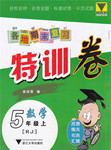题目内容
【题目】Robinson Crusoe is a famous novel written by Daniel Defoe. The book tells the story of a man who is shipwrecked (遭遇海难的). He spends 28 years on an island near Venezuela. The book tells the story of everything that happens to Robinson Crusoe. He hopes someone will rescue him, but he has been there for so long on his own that he also begins to fear being rescued.
Robinson Crusoe was published in 1719. Most experts believe the story is based on the life of Alexander Selkirk, who was a Scottish sailor. On an expedition in 1704, Selkirk had an argument with his ship’s captain. Selkirk thought the ship was not safe and was about to fall apart.
When the ship stopped at a remote island to get fresh water, Selkirk got off. He tried to get the other crew members to leave with him, but nobody would. The shop then sailed away without him. Selkirk spent four years and four months on his own on the island, known as Aguas Buenas.
Selkirk was finally rescued by a ship that visited the island in 1709. The ship’s captain was grateful to Selkirk because he provided food for the crew when they arrived.
Now archaeologists think they have found the remains of Selkirk’s camp on Aguas Buenas. They found two deep holes that would have held wooden posts. The archaeologists say this is evidence that Selkirk built a shelter there. The post holes are near a fresh water stream. They are located quite high up,
The most interesting evidence, the archaeologists say, is part of a piece of equipment used by sailors to navigate (导航). Historians believe Selkirk was a navigator, so the instrument could have belonged to him.
Robinson Crusoe was published ten years after Selkirk was rescued. Most experts think Daniel Defoe heard and read stories about Selkirk, which inspired him to write the book.
【1】Why did Selkirk choose to land on the remote island?
A. Because he had quarrels with the crew members.
B. Because the captain ordered him to get fresh water.
C. Because he wanted to go on an adventure there.
D. Because he thought the ship he was on was in danger.
【2】We can infer from the text that the ship that visited Aguas Buenas in 1709 _______.
A. lost its way while sailing
B. lacked fresh water upon arrival
C. was being navigated by Selkirk
D. was running out of food upon arrival
【3】How could Selkirk see ships that might rescue him, according to archaeologists?
A. By asking the crew members on the ships.
B. By sending messages to the ships’ captains.
C. By watching from his shelter high on the island.
D. By using a piece of equipment used to navigate.
【4】The author wrote the text to _______.
A. explain the origin of Robinson Crusoe
B. promote sales to Robinson Crusoe
C. criticise Alexander Selkrik’s deeds
D. praise Daniel Defoe for his writing inspiration
【答案】
【1】D
【2】D
【3】C
【4】A
【解析】
试题分析:本文介绍了《鲁宾逊漂流记》这个故事是根据Selkirk的真实故事而改编的。Selkirk曾经在一个孤岛上生活了4年。
【1】D 细节理解题。根据Selkirk thought the ship was not safe and was about to fall apart. 和When the ship stopped at a remote island to get fresh water, Selkirk got off.可知,他认为他所乘坐的船不安全,所以在船在一个遥远的岛上取淡水的时候,他离开了。故选D。
【2】D 推理判断题。 根据第四段的The ship’s captain was grateful to Selkirk because he provided food for the crew when they arrived.可知,船在到Selkirk所住的岛时就快断粮了。故选D。
【3】C 细节理解题。根据第五段的The post holes are near a fresh water stream. They are located quite high up, which would have meant that Selkirk was able to watch out for the ships coming close to the island.可知,Selkirk在淡水溪旁竖起了2个高高的木桩,这样他就可以看到有靠近岛的船了。故选C。
【4】A 主旨大意题。根据文章的开头可知,文章是要告诉读者《鲁宾逊漂流记》的创作来源。故选A。

 中考解读考点精练系列答案
中考解读考点精练系列答案 各地期末复习特训卷系列答案
各地期末复习特训卷系列答案【题目】选变填
leave out go through come up with add to apply to put down appeal to hold up make up in return in turn set out |
【1】The new technology, if rice growing,will help increase the grain output.
【2】He urgently the international community and to donors to offer more support.
【3】America helped the rebels for their promise to support democracy.
【4】Last month, car accident victims almost a quarter of the hospital's patients.
【5】Traffic for several hours by the accident,and no one knows how much longer we'll be stuck.
【6】Police used tear gas riot.
【7】The engine of the ship was out of order and the bad weather the helplessness of the crew at sea.
【8】None of the other children play with her, and I think she feels rather .
【9】When on a long walk, always wear suitable boots.
【10】He became tougher and more mature after ups and downs in his life.